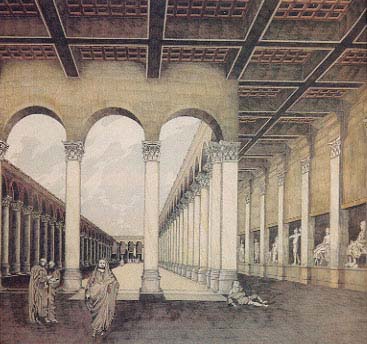Image Details

Andrew Herscher
The impressive building reconstructed here, based on extant remains and on other basilicas from the period, was more than 350 feet long and 115 feet wide. Twenty-five-foot-high columns, topped with Corinthian capitals, bordered a rectangular open courtyard. The two niches on either side of the far doorway held statues of Nike, goddess of Victory. Giving a further air of opulence to the structure was the imported marble used for the columns, sculpture and wall-facing.
John Garstang, who uncovered this structure in the 1920s, thought this was Herod’s peristyle (colonnades, or cloister) and Senate Hall (bouleuterion), but the building’s capitals, reliefs and inscriptions all point to a date during the Severan dynasty (late-second to early-third centuries A.D.). Accordingly, author Stager refers to it as a Severan basilica, an architectural term that does not imply a religious function (though churches from the fourth century on frequently adopted the basilica style).
